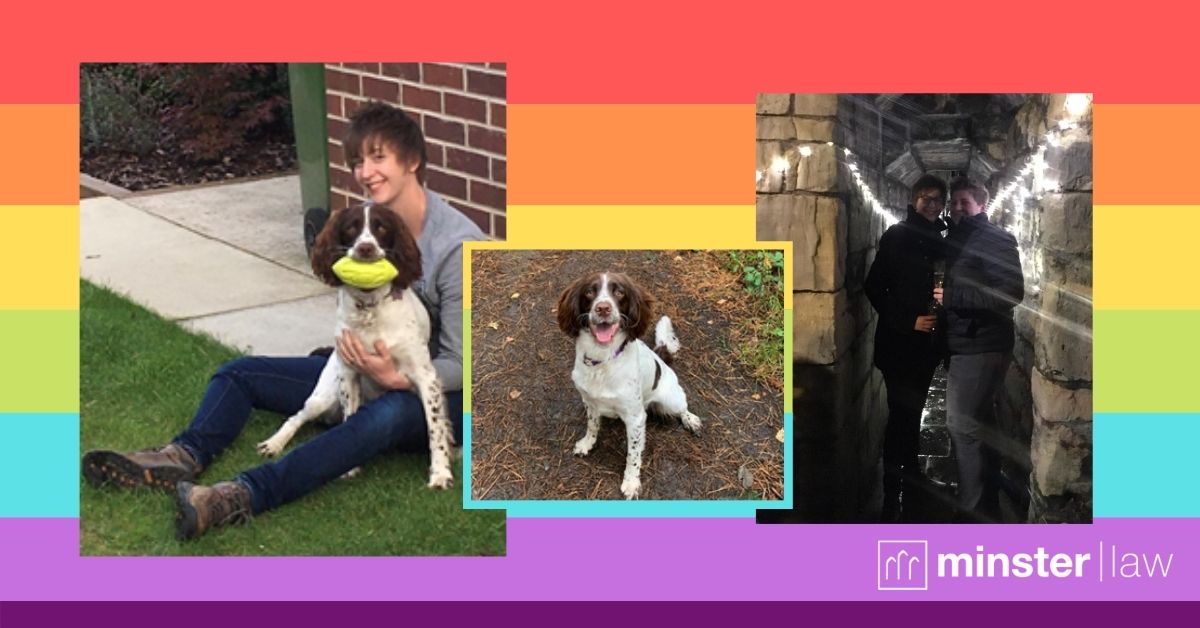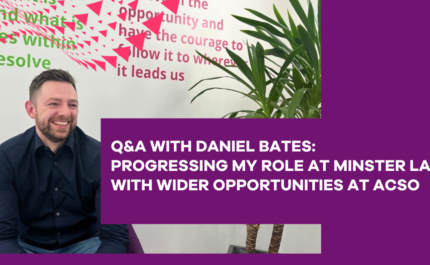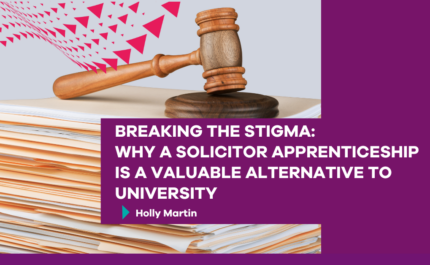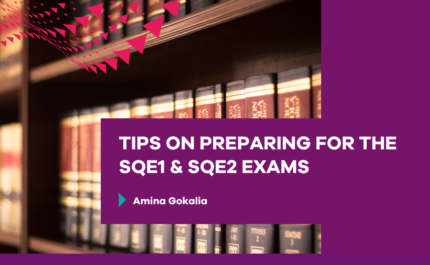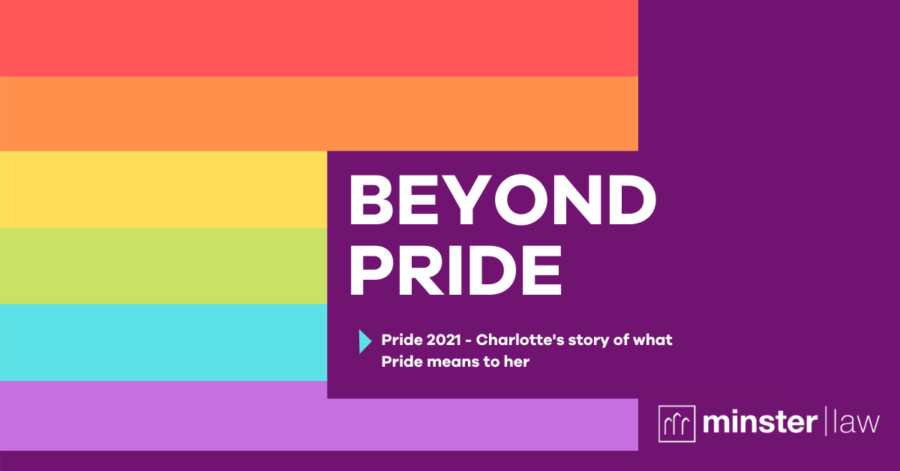
As Pride month draws to a close and the rainbow glow which has covered the last month fades away, it is perhaps the most important time to continue the conversation – so here is the story of our very own compliance wizard Charlotte O’Shea on what Pride means to her.
Our story begins with dinner – or tea if you prefer to name your evening meal after a beverage.
After a long day, featuring two rounds of tennis, someone else cooking was an entirely welcome treat. There was plenty of time to get ready – and by get ready I mean procrastinate, make coffee and try not to nap as the table wasn’t booked until 9pm.
Little did I know, my almost horizontal approach to getting ready was causing my dinner date untold stress, thanks to a friend helpfully letting them know I was too busy liking a picture of her dog on Facebook rather than doing anything vaguely resembling progress towards being ready to leave.
We were running behind schedule, but the wheels of a carefully laid plan were already in motion.
Fast forward to skipping pre-dinner drinks to walk the long way around to the restaurant, as it takes us past the location of our first kiss, because it’s a nice thing to do, especially in the rain.
Little did I know half a rugby team were hiding close by and had decorated part of the York city walls with fairy lights.
A question was popped, excitedly accepted and fizzy beverages were had once friends had emerged from their hiding places.
In case you were wondering, the dinner reservation was not a decoy – the food was delicious.
So, why am I telling you this relatively mundane story?
Here are a few things you should know about me:
- I’m rarely seen without a tennis racket in close proximity.
- My springer spaniel is the cutest pooch in the world – apologies other dog owners, I’m sure your furry friends are cute too, but the photographic evidence is overwhelming.
- I’m left-handed.
- I love to travel – with perhaps a few too many trips having been booked at the very last minute.
- I’m a total foodie – all the best breakfasts contain sourdough bread and a smashed avocado.
- I’m a gin enthusiast.
- I have a terrible affliction for being late to anything non-work related – to the point where no one in my life is prepared for me to be on time.
- Live comedy is brilliant and a trip to the Edinburgh Fringe is an almost annual tradition.
- Oh… and I am also engaged to a woman.
I am very aware how fortunate I am to not have experienced much in the way of struggles in my youth or moving into adulthood, aside from the odd occasion of clumsy wording, which likely arose as an unfortunate by-product of an attempt not to offend, rather than anything malicious.
So why are stories like this important? For me, it is important to appreciate how far we have come and recognise those who have made it possible for me and so many others to live the way we do today, and Pride month plays a part in that.
What is Pride?
So, you’ve seen the flags, had a party in the sunshine, lots of your favourite brands have released rainbow versions of a whole host of things – but, what’s all the fuss about?
June is Pride Month and during this time there are a whole host of events across the world in its honour.
Pride means a whole host of things to so many people:
- It is about coming together to celebrate love, friendship and the progress that has been made.
- It is about equality, love, embracing diversity and inclusivity.
- It is about supporting friends, family and colleagues.
- It is about celebrating LGBTQ+ culture.
- It is about education and championing tolerance.
- It is about acknowledging the difficulties some continue to face and continuing the journey towards true equality.
Above all, it is about being proud of who you are
(but also, who doesn’t love a good rainbow).
Time for a brief history lesson
If we travel back to the 1960s and earlier, LGBTQ+ people faced a myriad of discrimination and harassment. There were no legal protections to prevent this and, in fact, homosexual relations were illegal across most of the world.
If we focus the spotlight on the evening of June 28th, 1969, at the Stonewall Inn, New York, an event was about to take place which would act as a catalyst to propel the gay rights movement to the centre stage in the US and beyond.
To set the scene, gay bars were one of the limited, relatively safe, spaces for LGBTQ+ people to socialise.
At the time, venues openly serving alcohol to members of the LGBTQ+ community was considered ‘disorderly conduct’ which led to the withdrawal of liquor licences for these places. This meant that many of these spaces were often subject to regular harassment from Law enforcement.
On this day, one such police raid took place, employees of the Stonewall Inn were arrested, along with patrons who were not wearing at least three pieces of gender appropriate clothing – yes, that was actually a law!
Usually when this happened, people would disperse quickly, however on this occasion, the years of persecution and pent-up frustration boiled over, and patrons stood their ground. An uprising commenced and lasted five days.
In the wake of the events at the Stonewall Inn, the US Gay Liberation Front was established and furthered the call for equal rights.
The following year, an American activist, Brenda Howard (now known as the Mother of Pride) organised a protest march to commemorate the events that occurred at the Stonewall Inn.
Early marches were a combination of raising awareness of serious issues and offering a safe space for the LGBTQ+ community to celebrate their culture, serving to inspire and further the growing gay rights movement in the US and beyond.
Across the pond, the Brits were starting their own gay rights movement, and not long after the US Gay Liberation Front was formed a UK version was created to lobby for social change.
The first UK Pride was held in London in 1972 but was a far cry from the carnival style celebratory event we see today.
It was a protest, a demand for change which aimed to publicly challenge the societal norms which were so harmful to so many.
At the time there was very little visibility for LGBTQ+ role models as people were fearful of discrimination or felt shame over their sexuality, so numbers were initially limited but as momentum for the movement grew, numbers swelled year on year.
Where to from here?
We have made some monumental strides since the 1970’s, but there is still some way to go before equality for all is achieved.
While we have had a month to enjoy the rainbow themed everything, it is equally important to appreciate the story behind it and to keep the conversation going.
